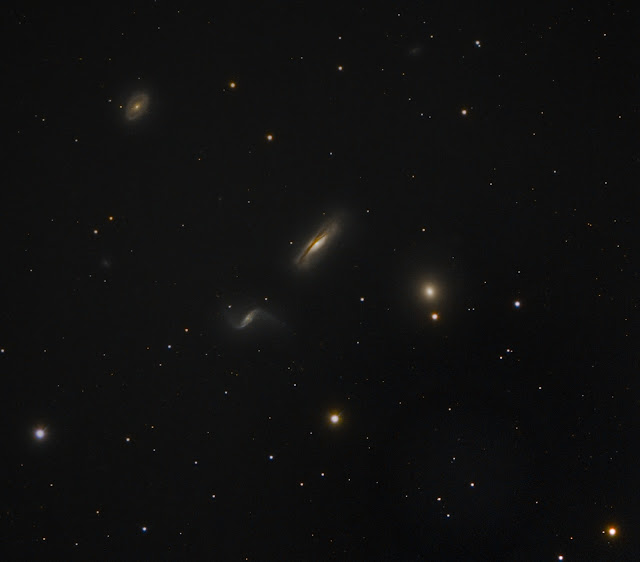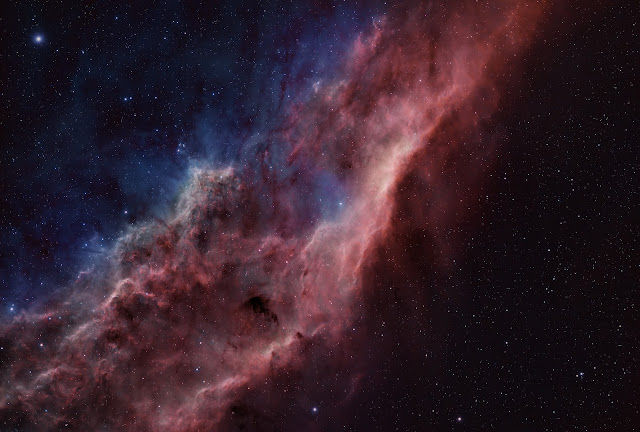I have long known about the ARP (The Atlas of peculiar Galaxies) but not known a great deal about the Hickson group of galaxies.
I was playing with Stellarium looking for a new group of galaxies in Leo when I by chance found the Hickson 44 group. As always I do a google search and check out what the group looks like and found the group to be really interesting.
The Hickson 44, after Canadian astronomer Paul Hickson, is a group of gravitational bound four galaxies about 100 million light-years away in constellation Leo. Other names include the Leo Quartet and the NGC 3190 Series. The two spiral galaxies in the center of the cropped image are edge-on NGC 3190 with its distinctive dust lanes, and S-shaped NGC 3187. The bright elliptical galaxy lower right is NGC 3193 the spiral in the center lower portion is NGC 3185.
Just 12 x 3 minutes per RGB filters used here, so a little over and hour and a half in total. Very pleased with the result and definitely worth a deeper view next spring.















